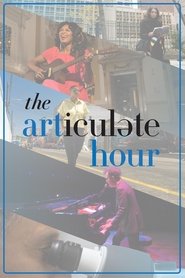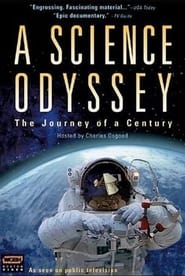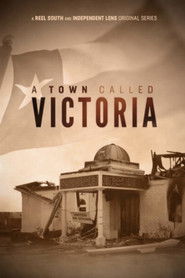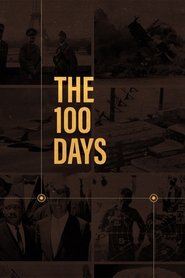Pbs TV Series - Page 36
-
Shakori Hills Concert Series
2016
The Shakori Hills Concert Series brings you performances from American & international music artists live from the Shakori Hills Community Arts Center in Pittsboro, North Carolina. Each week brings a new genre and a new musical experience. -
Search for Science
1967
Search for Science
1967
-
Inside/Out
1972
Inside/Out
1972
Inside/Out is a 1970s educational television series. The show was produced in 1972 and 1973 by the National Instructional Television Center, in association with various contributing stations, such as KETC in St. Louis, Missouri, WVIZ in Cleveland Ohio, WNVT-TV in Northern Virginia, and The Ontario Educational Communications Authority. It was one of the last programs to be produced by NIT; the organisation would be reformulated as the "Agency for Instructional Television" in April 1973. Funding for Inside/Out was provided by grants from 32 different educational agencies within the USA and Canada, with additional support from Exxon Corporation. -
The Articulate Hour
2023
The Articulate Hour
2023
Through conversations with artists, scholars, and other great creative thinkers, the complex world is explored through a lens of arts, culture, and science. -
Evening at Pops
0000
star 7Evening at Pops was an American concert television series produced by WGBH-TV. It was one of the longest-running programs on PBS. The program was a public television version of a variety show, performed by the Boston Pops Orchestra. It was taped at Symphony Hall in Boston, Massachusetts. -
Sea Change: The Gulf of Maine
2024
It is a story about the Gulf of Maine, a sea within the sea, a body of water that is warming 97% faster than the global ocean. What happens here to the animals in the water, to the jobs that are dependent upon it and to the millions of people living along its shores is likely to happen worldwide. We are at a crossroads for the future of the Gulf and all our oceans. Does it retain enough of its biodiversity and regenerative strength to weather the human-induced storm? Is the sheer beauty of this place and spectacular range of its creatures enough to wake us to what is at stake? -
Animal Attractions Television
2006
Animal Attractions Television is a television program about the deep affection people have for their pets. The show is hosted by Alex Boylan, Megan Blake and Chrishaunda Lee. This series airs on PBS stations in the US, and is funded in part by Hill's Science Diet. There were three seasons of the series, starting in 2006 and ending in 2009. -
On The Level
1980
-
A Science Odyssey
1998
A Science Odyssey
1998
-
NEXT at the Kennedy Center
2022
A mix of artists across hip-hop, jazz, modern dance and more perform at The Kennedy Center. -
A Town Called Victoria
2023
The South Texas town of Victoria faces difficult questions about its own identity after a local mosque is burned to the ground. -
World’s Greatest Engineering Icons
2021
The world is full of extraordinary buildings that soar and inspire; monumental marvels that have become cornerstones of our heritage and culture. The Great Pyramid of Giza, Angkor Wat, Stonehenge, The Acropolis, The Colosseum, Petra, The Forbidden City, Red Square, Buckingham Palace, The Eiffel Tower, Burj Khalifa, The Sydney Opera House, The White House and more. Over the course of six episodes we circle the globe, exploring the World’s Greatest Icons: that honor the sacred, buildings that reach for the sky, fairytale castles, lavish royal palaces, built environments that enhance communities and structures that represent power. Over fifteen unique buildings feature in every episode of World’s Greatest Engineered Icons. Powerful imagery and narratives that closely follow the course of history allow us to explore the artistry, ingenuity and engineering behind humanity’s greatest architectural accomplishments: the structures that define who we are and all we aspire to achieve. -
American Scrapbook
0000
American Scrapbook
0000
-
Horizonte
0000
Horizonte
0000
Horizonte is a current events television program produced by KAET in Phoenix, Arizona. It is one of the two locally produced news program for KAET, the other being its sister program, Horizon. The show is produced at KAET's studios in the Cronkite Building on Arizona State University's downtown Phoenix campus. -
Wisconsin Life
2014
Wisconsin Life
2014
Celebrate Wisconsin's people and places with host Angela Fitzgerald. Learn something new, meet someone unexpected. Wisconsin Life is a collaboration from PBS Wisconsin and Wisconsin Public Radio. Watch, learn, listen at wisconsinlife.org. -
The 100 Days
2022
The 100 Days
2022
This dramatic series tells stories of 20th century world events, revealing unexpected aspects of some of the pivotal moments of modern history. Each episode focuses on one major event and the 100 days that give context to the events leading up, during or at the close. The narrative of each episode will unearth little-known incidents and characters and gives a sense of what lies ahead. -
World
0000
World
0000











